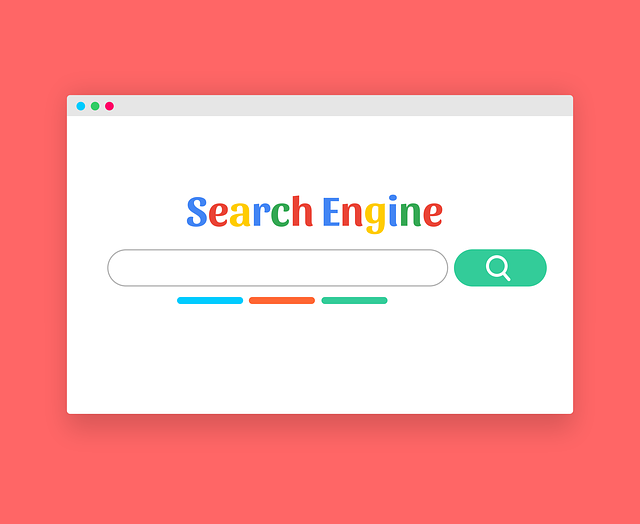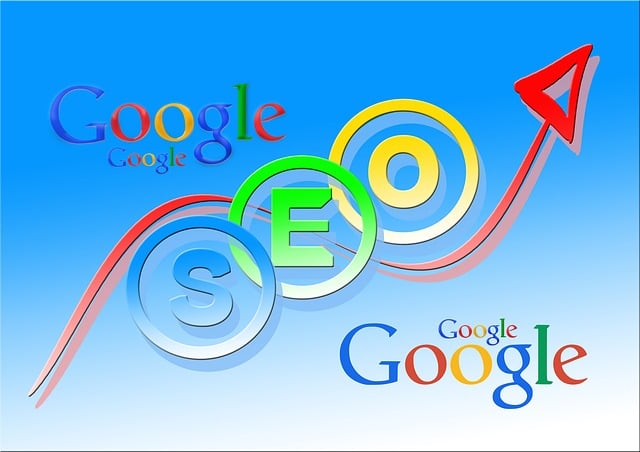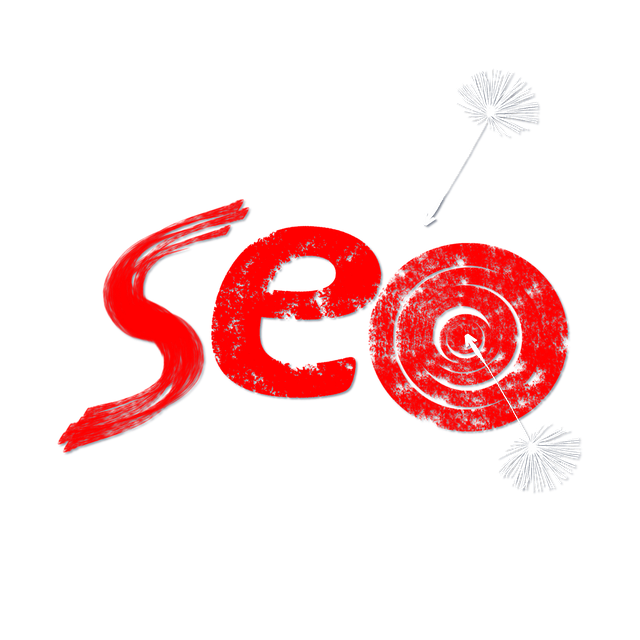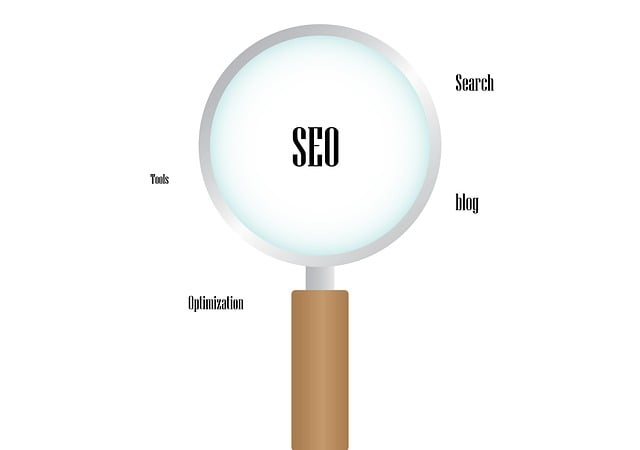SEO Content Optimization is crucial for digital marketing success, enhancing website visibility on search engines like Google. This strategy involves structuring content with keywords, headings, meta descriptions, and internal linking to improve rankings and drive organic traffic. Key practices include keyword research, seamless integration without spamming, creating high-quality content, using effective formatting, and implementing internal links. Structured content, utilizing headers and subheadings, improves readability and navigation for both users and search engines, leading to better content discoverability. Meta descriptions summarize page content concisely while incorporating keywords naturally to increase engagement. Competitor analysis is vital for understanding market trends and gaining a competitive edge in SEO strategy. Strategic tools like Google Keyword Planner, SEMrush, Google Search Console, Ahrefs, Screaming Frog, and Moz facilitate continuous optimization by identifying technical issues, tracking rankings, and adjusting content strategies for sustained online growth.
“Unleash the power of effective SEO content optimization with our comprehensive workshop. In this guide, we delve into the core principles of digital visibility, exploring how keyword strategy and on-page SEO practices shape online success. Learn the art of crafting compelling titles and headers that attract clicks and improve user experience. From optimizing meta descriptions to analyzing competitors, discover practical techniques for enhancing your content’s reach and performance through structured, SEO-friendly content strategies.”
Understanding SEO Content Optimization: The Foundation of Digital Visibility

SEO Content Optimization is the cornerstone of any successful digital marketing strategy. It involves strategically crafting and structuring content to enhance its visibility on search engines like Google. By understanding how search algorithms work, businesses can create valuable, relevant, and engaging content that resonates with their target audience. This process includes optimizing various elements such as keywords, headings, meta descriptions, and internal linking, ensuring your website not only appears in search results but also ranks higher, thereby driving more organic traffic.
Effective SEO Content Optimization requires a deep dive into keyword research to identify the terms your potential customers are using when searching for products or services related to your business. Once these keywords are discovered, they should be seamlessly integrated throughout your content—from blog posts and website copy to product descriptions and social media captions—in a natural and contextually appropriate manner. This strategy ensures that both search engines and users find your content informative, useful, and highly relevant to their queries, ultimately boosting your online presence and driving business growth.
The Role of Keywords in Crafting Effective Titles and Headers

In the realm of digital content creation, understanding the significance of keywords is paramount for effective SEO content optimization. Keywords serve as the building blocks for crafting compelling titles and headers that attract readers and search engines alike. A well-researched and strategically placed keyword can significantly enhance visibility, ensuring your article stands out in a sea of online content.
When creating titles and headers, incorporating relevant keywords allows you to communicate both the subject matter and value of your article accurately. This approach resonates with reader intent, encouraging clicks and engagement. Moreover, search engines use these keywords to index your content, making it more discoverable for users searching for related information. Thus, optimizing titles and headers goes beyond aesthetics; it’s a strategic move towards better online accessibility and higher rankings in search engine results.
Optimizing for Search Engines: Best Practices for On-Page SEO

In today’s digital era, optimizing for search engines is no longer a choice but a necessity for any business aiming to thrive online. SEO content optimization is a strategic process that involves refining your website’s on-page elements to enhance its visibility and ranking in search engine results pages (SERPs). Best practices include conducting thorough keyword research to understand what your target audience is searching for, and then seamlessly integrating these keywords into your page titles, headings, meta descriptions, and throughout the content without appearing spammy.
Additionally, creating high-quality, engaging content that provides genuine value to readers is paramount. Search engines prioritize content that offers in-depth information, answers questions, or solves problems. Utilizing effective formatting, such as bullet points, lists, and subheadings, improves readability and helps search engine algorithms understand the hierarchy and structure of your content. Internal linking also plays a crucial role by connecting relevant pages within your site, allowing users and search engines to navigate more easily.
Enhancing Readability and User Experience with Structured Content

In today’s digital era, enhancing readability and user experience is paramount for any online content strategy. Structured content plays a pivotal role in achieving this by organizing information logically, making it easier for both search engines and users to navigate. SEO Content Optimization techniques such as headings, subheadings, bullet points, and short paragraphs break down complex ideas into digestible chunks, improving overall readability.
This approach not only benefits users by providing a pleasant reading experience but also signals to search engines that your content is well-organized and relevant. By prioritizing structure, you ensure that your audience can quickly find the information they seek, leading to reduced bounce rates and increased engagement. Structured content also allows for better content discoverability, making it more likely that your work will be featured in search results, thereby driving organic traffic to your site.
Leveraging Header Tags: H1, H2, and Below for Improved Navigation

In the realm of SEO Content Optimization, header tags serve as waypoints for both search engines and users, making it easier to navigate a webpage. The H1 tag, reserved for the main heading, acts as the cornerstone of your content’s structure. Below this, H2 and subsequent headers (H3, H4, etc.) act as sub-headings, breaking down complex topics into digestible chunks. This hierarchical organization not only enhances readability but also improves accessibility features, ensuring users can swiftly grasp key concepts.
By strategically placing these header tags, you signal to search engines the importance of certain sections within your content. This, in turn, allows for more accurate indexing and better ranking potential. Remember that clarity and relevance are key when using headers; each heading should represent a distinct yet interconnected part of your SEO-optimized article.
Strategies for Creating Engaging Meta Descriptions That Drive Clicks

Creating compelling meta descriptions is an art that can significantly boost your website’s click-through rate and search engine rankings. These brief summaries, often limited to a few words and characters, are your chance to capture the attention of potential visitors. A well-crafted meta description should accurately reflect the content of the page while incorporating relevant keywords naturally. Think of it as a persuasive sales pitch in the space provided.
Focus on clarity and conciseness; most users will read only the first few words before deciding whether or not to click. Highlight unique selling points, especially if your webpage offers a specific solution or has distinctive content. Ensure the description evokes curiosity without giving away all the details, leaving users eager to explore further. Remember, SEO content optimization extends beyond keywords; it’s about crafting compelling copy that aligns with user search intent.
Analyzing Competitors: Uncovering SEO Secrets through Title and Header Analysis

Analyzing competitors is a crucial step in any successful SEO strategy, especially when it comes to optimizing titles and headers for better content visibility. By studying what your rivals are doing, you can uncover valuable insights into the current market trends and gain a competitive edge. This involves meticulously examining their website titles, headings, and overall on-page structure to identify patterns and best practices.
Through this process, you can discover effective SEO techniques they employ, such as keyword usage, title tag length, and header hierarchy. For instance, understanding how competitors optimize their titles for relevant keywords can guide your own content strategy. By implementing similar tactics while ensuring unique and engaging content, you enhance the chances of ranking higher in search engine results, ultimately improving your overall SEO content optimization efforts.
Tools and Techniques for Continuous SEO Content Optimization

In today’s digital era, SEO Content Optimization is an ever-evolving field that demands a strategic and dynamic approach. Professional content creators now have access to a plethora of tools and techniques to stay ahead in their game. From keyword research tools like Google Keyword Planner and SEMrush to analytics platforms such as Google Search Console and Ahrefs, these resources provide valuable insights into search engine trends and user behavior. By understanding the keywords that drive traffic and the topics that resonate with audiences, content creators can optimize existing material and create fresh, engaging content that aligns with current SEO best practices.
Additionally, regular content audits and keyword monitoring are essential for continuous optimization. Tools like Screaming Frog and Moz help identify technical issues, while also tracking changes in search rankings and organic traffic. This allows for swift adjustments to content strategies, ensuring that the material remains relevant and ranks highly on search engines. With these techniques in place, folks can foster a robust online presence and drive sustainable growth over time.
